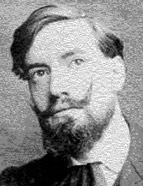

The theory of secrecy revealed the historian's major concern: the rationality of construction. It was in this effort to incorporate displaced or unclassifiable stones in the understanding he sought, that the attempt to consider secrecy as inherent to the history of the Portuguese discoveries emerged and developed. In this initially rather incongruous whole, many of the testimonies needed to be made intelligible. The dissatisfied citizen of a threatened republic, the unfulfilled poet of action who felt all the value of life in a real dramatic conflict, shifted from the experience of history to the construction of history. From the epic in which he had participated, from the page of history he had written in blood, he moved on to the epic experienced by others, in other eras. He became excited in this encounter-revelation, in this community where he attained a "profound exaltation of the spirit, with some of the Men of our Golden Age". In a history whose writing he now referred to as "distilling in the archives" (In Memoriam do Conde de Sabugosa [In memoriam of the Count of Sabugosa], p. 230).
Two years later, Jaime Cortesão published a remarkable article: "Do sigilo nacional sobre os descobrimentos"[“On national secrecy regarding the discoveries"]. He went even further in the subtitle: "Crónicas desaparecidas, mutiladas e falseadas, alguns dos feitos que se calaram" [“Missing, mutilated and distorted chronicles, some of the deeds that were hushed”]. (Lusitânia. Fasc. 1 issue 1], January 1924, pp. 153-174). The reason would have been that, in defence of the commercial monopoly, the dissemination of news was forbidden, as was its very record, so that the competition would not destroy what a small and poorly defended people had obtained. This seductive hypothesis, that had already been used in the previous study, would fully explain the silence of the sources and, above all, the incongruities of the pivotal text, Crónica dos feitos de Guiné [Chronicle of the accomplishments in Guinea], by Gomes Eanes de Azurara. By analysing the whole process in detail, piece by piece, he embraced the theory of the imposed official secrecy and of the existence of another epic waiting to be revealed. Beyond the known documents, "there were other hidden Lusiads". (Ibidem, p. 81) It is perhaps this view that has been the most controversial of Cortesão's entire work. While the thesis of secrecy was unanimously accepted for the last decades of the century, at the time when King John II made it official, secrecy at the time of Prince Henry the navigator was far from consensual. Both Duarte Leite and Vitorino Magalhães Godinho, with a different type of analysis, rejected the position presented and which was always defended from then on. However, in Cortesão's view, secrecy was essential to the methodology of the History of the Discoveries, which he presented as his own, in addition to the general historical methods he developed from other influences.
